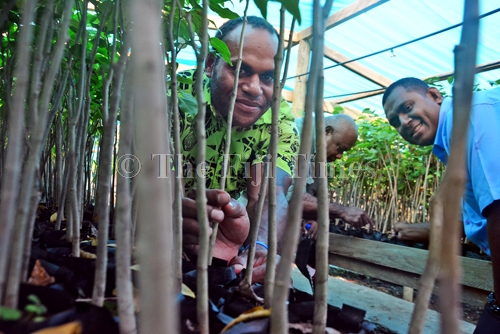IN recent years, concerns had been raised in Fiji about the decline in indigenous forests to provide essential products and services in the country.
The forest product trade at the local market is gradually expanding but the availability of indigenous forest resources is declining.
Minister for Forests Osea Naiqamu, during the launch of the indigenous tree nursery in Vunimaqo Forestry Station in Galoa, said the problem may be associated with management approaches and strategies that Fiji were currently undertaking.
“Forest degradation is a serious problem, environmentally, socially and economically.
“In Fiji, this was identified in 2009 as a major issue posing a great degree of threat to the sustainability of Fiji’s forest ecosystem,” Mr Naiqamu said.
He said Fiji’s forest cover amounted to about one million hectares which was about 60 per cent of the total land area in Fiji.
“Fiji’s forests are home to at least 1518 species of vascular plants of which 50.1 per cent is endemic and 9.9 per cent of Fiji is protected under the International Union for Conservation of Nature (IUCN) categories,” he said.
“In Fiji, forest degradation is relatively prominent covering almost one-third of Fiji’s landmass with a lot of fragmented forest systems in between. “The rate of forest degradation stands at 0.07 per cent while the deforestation rate is 0.02 per cent.”
In describing the Fiji National Development 5-Year Plan under the Forest Sector Development Mr Naiqamu said the plan stated that the Ministry of Forests would take the lead role in collaborating with Fiji stakeholders to strategically increase Fiji’s forest areas by 56 per cent and plant almost 1.5 million native tree species on deforested and forest degraded areas.
He said there were still a lot of under-utilised land that would be planted with indigenous tree species for a diverse range of important services into the future and also to meet our commitment to reforest 53000 hectares of native species by 2022.
“I strongly believe this will support Fiji’s commitment to reduce carbon emissions and strive to achieve a land degradation neutral world by 2030,” he said.
Government had allocated an additional of a quarter million (current financial year) for the revitalisation and reforestation of local species to encourage individuals and communities on key areas.
Those key areas include promoting the planting of indigenous tree species for different functions that people potentially benefit from, the production of indigenous tree species seedlings for availability to the public for purchasing to plant and supporting the indigenous tree planting for future social and economic development opportunities.




